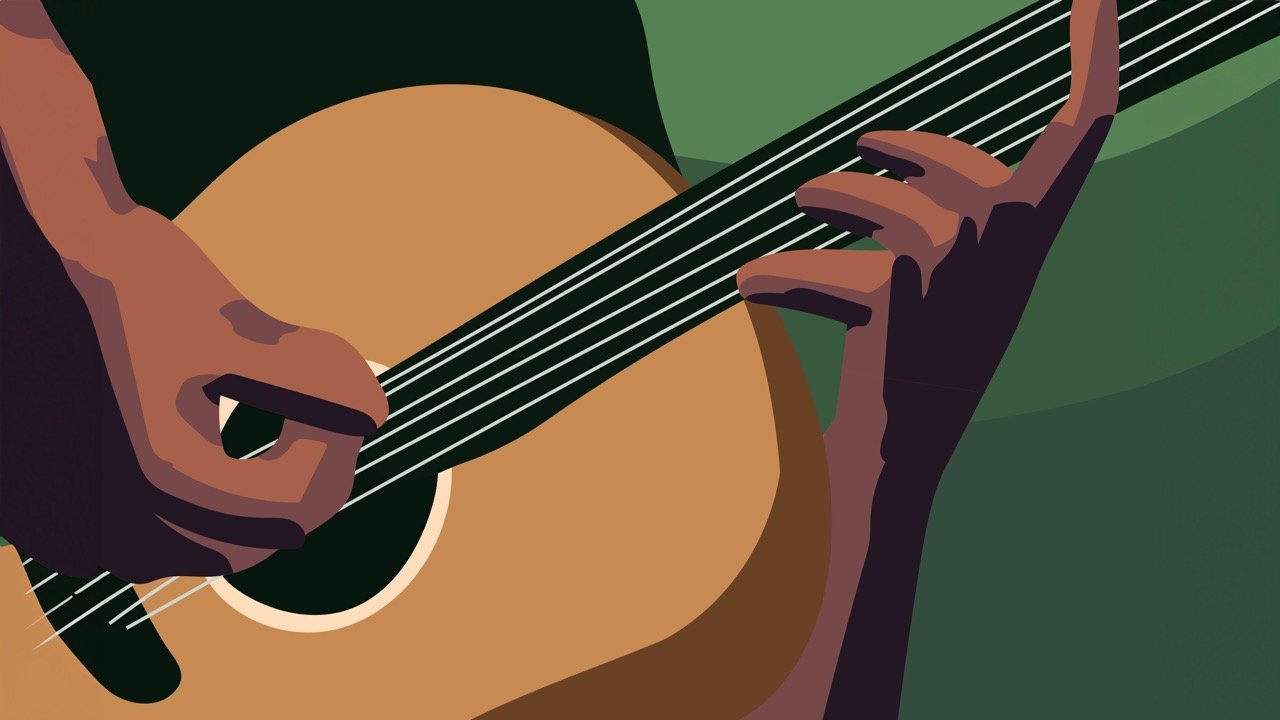The City Where I Live
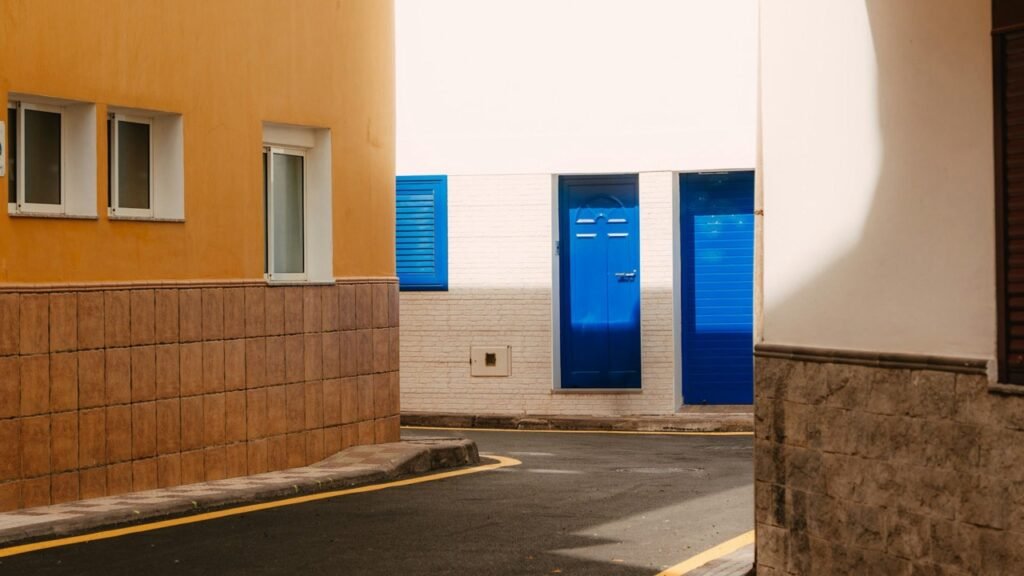
This A2 ESL lesson on cities is designed to expand students’ vocabulary with 30 engaging words across various categories, including adjectives, parts of the city, and locations. The lesson is highly conversational, featuring beautiful images to inspire discussions and enhance learning. Students will engage in plenty of speaking practice, ensuring they can confidently describe different cities. Homework is also provided to reinforce the vocabulary learned in class.
| Type | Level | Vocabulary | Lesson time |
| Regular Lesson | A2 / Pre-Intermediate | 30 words | 60 min |
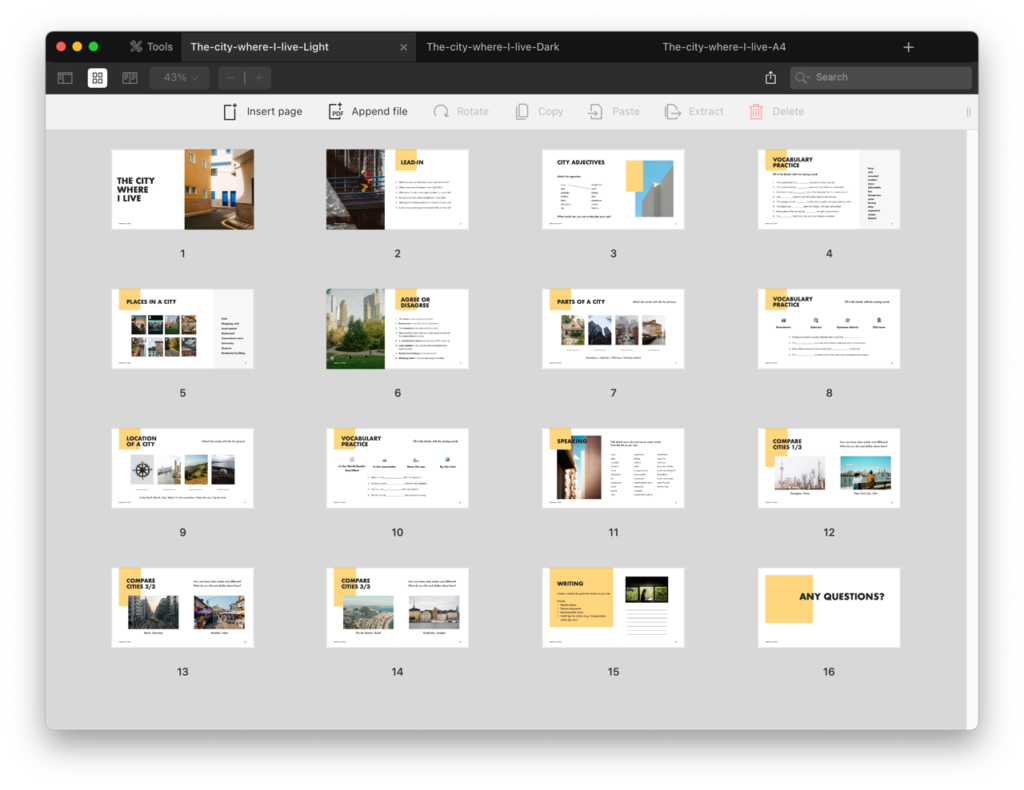
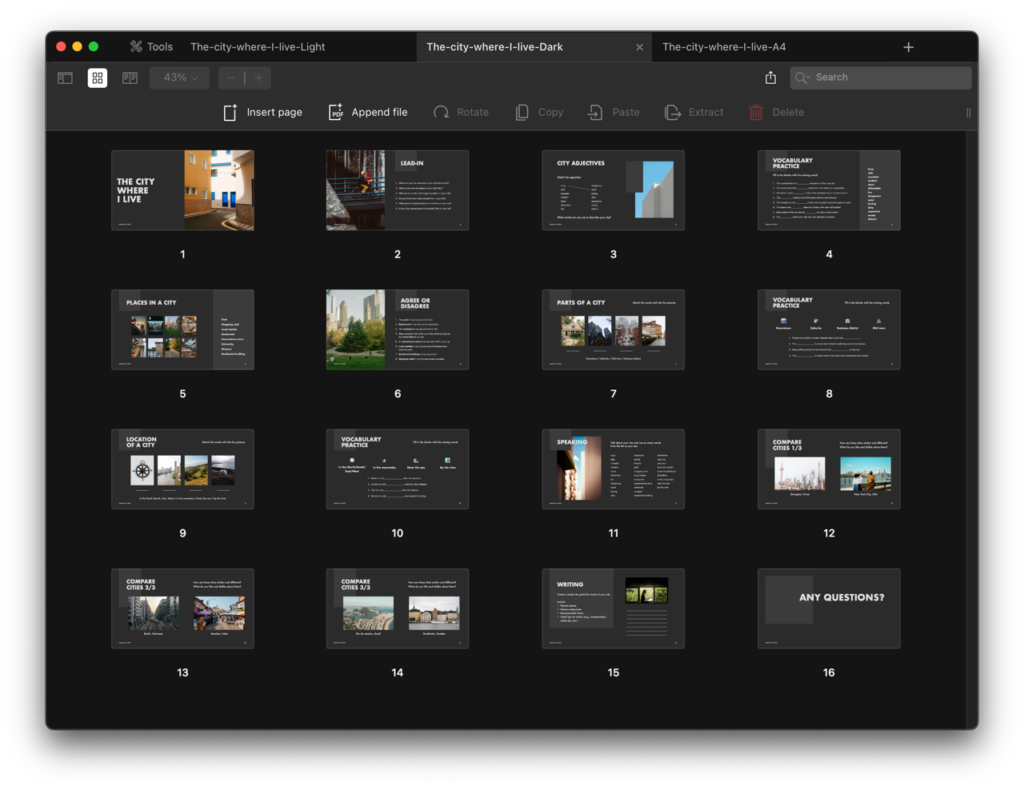
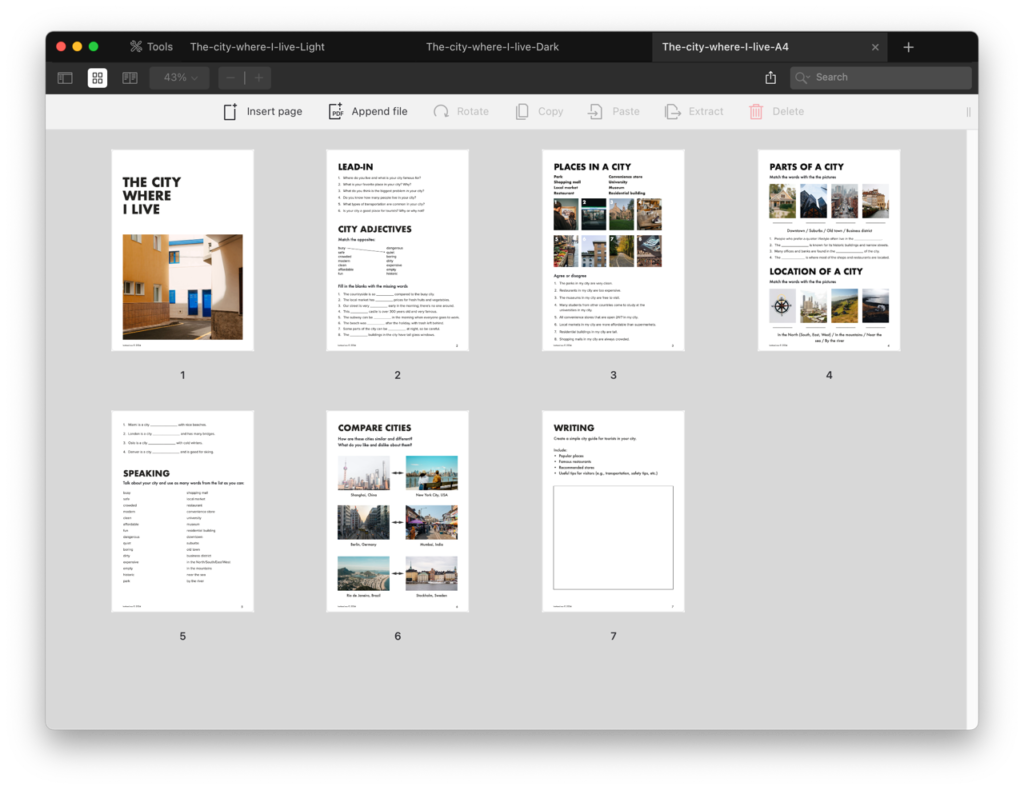
Vocabulary
- busy
- safe
- crowded
- modern
- clean
- affordable
- fun
- dangerous
- quiet
- boring
- dirty
- expensive
- empty
- historic
- park
- shopping mall
- local market
- restaurant
- convenience store
- university
- museum
- residential building
- downtown
- suburbs
- old town
- business district
- in the North/South/ East/West
- in the mountains
- near the sea
- by the river
Contents
- Lead-in
- City adjectives
- Vocabulary practice
- Places in a city
- Agree or disagree
- Parts of a city
- Vocabulary practice
- Location of a city
- Vocabulary practice
- Speaking
- Compare cities
- Writing
Lead-in
This is a conversational lesson for A2 ESL students about cities. The lesson starts with a general discussion, using several lead-in questions about the cities where the students live. The lesson will focus on useful vocabulary to describe cities, including adjectives, places in the city, parts of the city, and the location of a city.
City adjectives, Vocabulary practice
City adjectives: the students will learn 14 words to describe cities. They will match opposites, including words like busy and quiet, modern and historic, and affordable and expensive. Following this, they will practice using the vocabulary by filling in the blanks with the missing words in an exercise.
Places in a city, Agree or disagree
Places in a city: Students will match words with pictures, including words like park, shopping mall, local market, and restaurant, etc. Next, they will agree or disagree with several statements about their own cities and express their opinions.
Parts of a city, Vocabulary practice
Parts of the city: Students need to match four pictures with four words, including words like downtown, suburbs, old town, and business district. On the next slide, they will fill in the blanks with the missing words to practice the vocabulary.
Location of a city, Vocabulary practice
Location of a city: Students will identify pictures representing various city locations, including terms like “in the north,” “in the mountains,” “near the sea,” and “by the river.” On the next slide, they will use these words in sentences to reinforce their understanding.
Speaking
Additionally, there is an exercise where students will discuss their own city and use as many words from the previous lesson as they can.
Compare cities, Writing
The final section concludes with a speaking activity where students will compare cities. Three slides will present six different cities. Students will discuss the similarities and differences between these cities, as well as their personal likes and dislikes regarding each one. They will have the opportunity to use the vocabulary learned in class to enrich their discussions. Additionally, an optional writing exercise can serve as homework, in which students create a simple city guide for tourists visiting their city. This guide may include popular attractions, renowned restaurants, recommended stores, and helpful tips for visitors.

